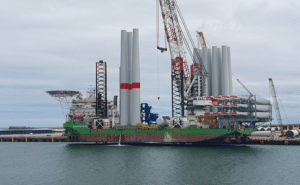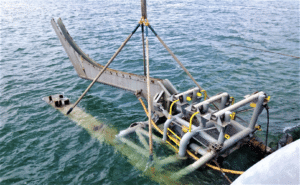Submarine Transmission
Submarine Transmission
The routing and construction of submarine export cables can be a challenging task. Risks, including subbase layers, underwater obstacles, water depth, environmental sensitivities, and cable protection, can result in increased costs and delays, potentially rendering the project unfeasible. Leveraging our extensive knowledge, practical experience, and a network across offshore wind and multidisciplinary engineering expertise, the XYZER team ensures the safe and timely delivery of projects.

• Pre-FEED and FEED studies
• Landing location study, optimization, and selection
• Narrative of cable landing pull-in methods, illustrations and drawings
• HDD method at shoreline landing, proposing entry and exit locations
• Technical & financial study input to select voltage, fiber, and instrumentation
• Cable engineering and protection study
• Shallow water installation challenges and risk assessment
• Cable burial plan, technology, comparison and risk assessment.

• Technical parameters, design criteria, and project design memorandum
• Developing offshore & onshore construction narratives, and scope of work
• Engineering cable routes, recommendations for approach, tooling and execution
• Submarine survey specifications for bathymetric route survey, vibratory coring, geotechnical investigation, and subsea soil thermal resistivity testing
• Support during survey, refining the route, and analyzing survey data
• Overseeing survey work, and reviewing and analyzing the results
• Technical specifications for cables and accessories
• Detailed design and drawing package
• Joint bay and transition splicing vault design
• In-depth engineering design, cable sizing, ampacity calculations, subsea and inside HDD pipe, EMF, and pulling calculations
• Project CAPEX and OPEX cost estimates
• Leading negotiations and managing technical aspects of export cable supply
• Supporting clients throughout manufacturing process, witnessing tests
• Engineering support during construction, reviewing vendor documents, responding to field RFIs, conducting site visits, and aiding in field testing and commissioning.

